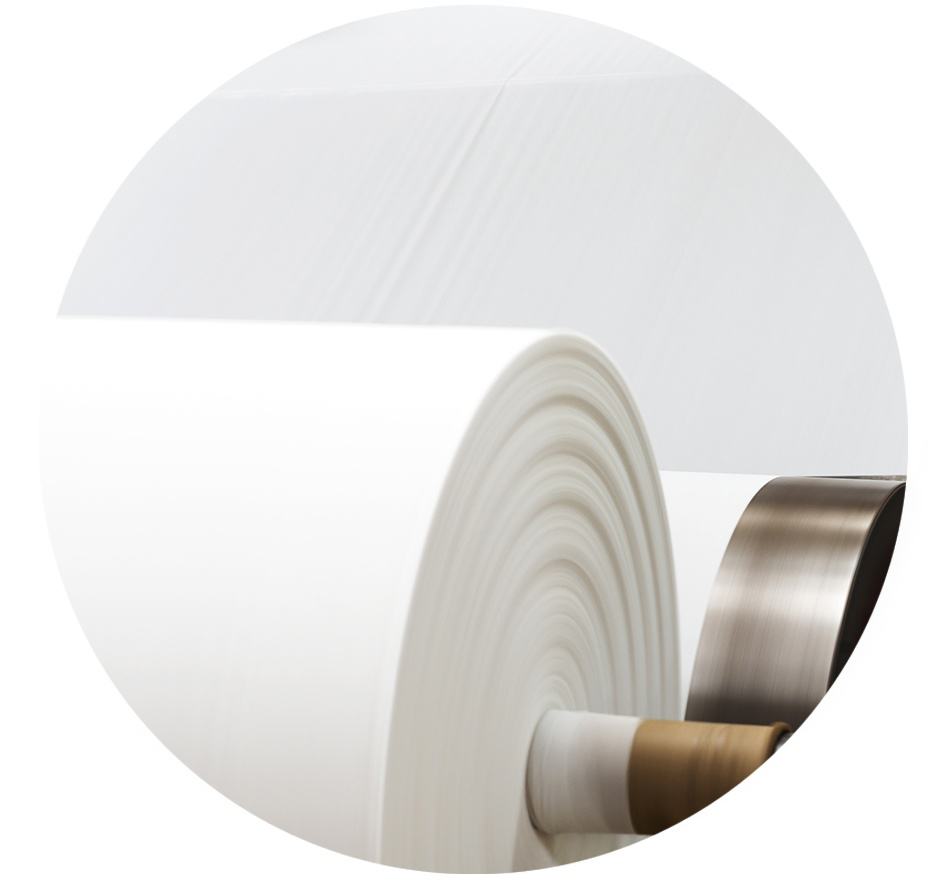The pulp and paper industry has experienced a large push to reduce environmental impacts and develop more sustainable practices. KSS helps mills accomplish these goals through the recovery of starch, clay, wood fibers and cellulose from production streams, and the purification and recycle of process chemicals such as caustic and sulfuric acid. We also offer reliable water and wastewater treatment solutions to reduce process water consumption and effluent volumes.

One of the most widely recognized limitations to mill operations is the accumulation of non-process elements. Our technology offers an efficient and reliable solution for the separation and removal of contaminants that build up in pulp & paper mills.
Note: PDP-K Ion Exchange System used for combined chloride and potassium removal
Ideal for:
Chloride Removal
Chloride is found in wood chips, caustic, and generator spent acid, and are known to cause plugging, corrosion, and minimized steam generation leading to expensive shutdowns. Our precipitator dust purification system selectively removes chloride from electrostatic precipitator (ESP) dust while recovering valuable cooking chemicals.
Potassium Removal
Potassium from wood can cause corrosion and efficiency problems in the chemical recovery boiler. Our removal system reduces potassium salts to manageable levels while recovering valuable cooking chemicals.
Chlorine dioxide (ClO2) is widely used in pulp bleaching. ClO2 generators continuously purge sulfuric acid to prevent accumulation of sodium sulfate, but our technologies separate waste streams to allow for the recycle of sulfuric acid resulting in dramatic cost savings on acid purchases, fewer shutdowns, and a more efficient process.
Ideal for:
Sulfuric Acid Recovery
Our solution is built off our acid purification expertise to separate sulfuric acid from sodium sulfate in ClO2 generator waste streams.
Membrane systems in paper mills are employed as point source break wastewater treatment systems to reduce high solids and COD loading on downstream wastewater treatment, to recover for reuse coatings that are returned to the coating kitchens, and concentrating PVA coatings lost in operations to significantly reduce COD to end of pipe cleanup.
Ideal for:
Coating Recovery
Paper Coating breaks cause valuable product and chemical losses with uneeded loading on downstream wastewater treatment processes. Tubular membrane systems catch and recover coatings for reuse in the papermaking process.
Membrane systems in paper mills are employed as kidney point-source systems to produce suspended solids free water as substitute for fresh water in critical showers and chemical makeup systems. Further treatment of this filtrate will remove dissolved solids from the mill water loop to improve papermaking production while reducing energy demand. Concentrates from the membrane systems are sold as paper fiber-based byproducts.
Ideal for:
Water Recovery
Recovering wastewater by membrane processes results in reduced fresh water plant needs, imroved papermaking, energy savings, and end of pipe wastewater discharge requirements and costs.
Wastewater Reuse
Clarifying whitewater by membrane processes results in water recovery with plant freshwater reduction, improved papermaking, energy savings, and end of pipe waste treatment costs. Membranes are used to separate suspended and dissolved solids for clear water that is substituted into those operations requiring freshwater quality.
Flexographic container, newspaper, and wrapping printing operations require end of run washups that produce high load wastewaters requiring significant pretreatment for discharge. Using a simple one step chemical free membrane system as a point source or end of pipe treatment system allows separation and significant concentration of color bodies, that can be reused or hauled in a concentrated form at a 95+% reduced hauling cost. Filtrate from the membrane operation is discharged.
Ideal for:
Wastewater Treatment
Tubular membrane systems treat press operation wash waters and concentrate inks for reduced hauling costs if not recovery for reuse of inks. Membrane filtrate can also be recycled into washing stations, or can be discharged to drain.
Our filtration and separation solutions for pulp and paper wastewater treatment produce water for recovery and recycle back to the plant, or for direct discharge to drain. Depending on the technology selected, contaminants are either reduced sufficiently for direct discharge or significantly concentrated to substantially reduce hauling costs. Wastewaters from these industries are considered among the toughest to treat, containing high levels of suspended solids, chemical dyes, fibrous material, oil & grease, tannins, lignins, BOD and COD. Our systems solve these problems by not only applying the correct membrane configuration, but by combining these specialized membranes with over 50 years of KSS system design and installation experience on these unforgiving waste streams.
Ideal for:
Wastewater Treatment
Direct filtration for reduction of TSS and/or organics reduction. Biological treatment to eliminate BOD and reduce COD.
Wastewater Reuse
Pretreated TSS free wastewaters can be further polished for dissolved solids removal from process water for recycle and reuse, reducing fresh water usage and end of pipe wastewater volume and associated costs.
High Purity Water
Demineralization & softening
Our filtration and separation solutions for pulp and paper wastewater treatment function to reduce wastewater color and produce filtrate for discharge or recovery and recycle. Colored wastewaters from pulp and paper operations can be challenging to treat and direct experience in applying membrane separations on this process is a requirement that KSS will meet.
Ideal for:
Color Reduction Wastewater
End of pipe or point source treatment, membrane systems will remove color bodies to meet discharge requirements.
The KSS Causti-COR Nanofiltration Membrane Systems offer a cost effective, environmentally friendly way to recover the expensive caustic solutions used to clean process equipment. Causti-COR systems utilize our patented SelRO® membranes to recover up to 95% of caustic for reuse by removing low molecular weight organic and inorganic contaminants.
Ideal for:
Clarification
KSS SelRO nanofiltration technology helps textile clients recover concentrated caustic from the fiber and fabric treatment operation. The KSS technology brings large cost savings demonstrating excellent recycled caustic quality, long membrane life and improved process efficiency and reliability under very harsh conditions.